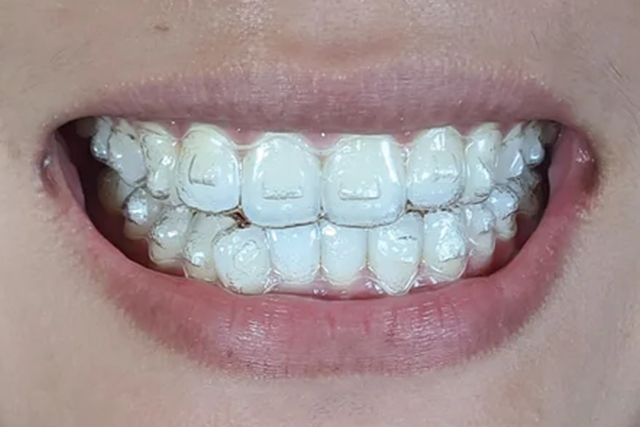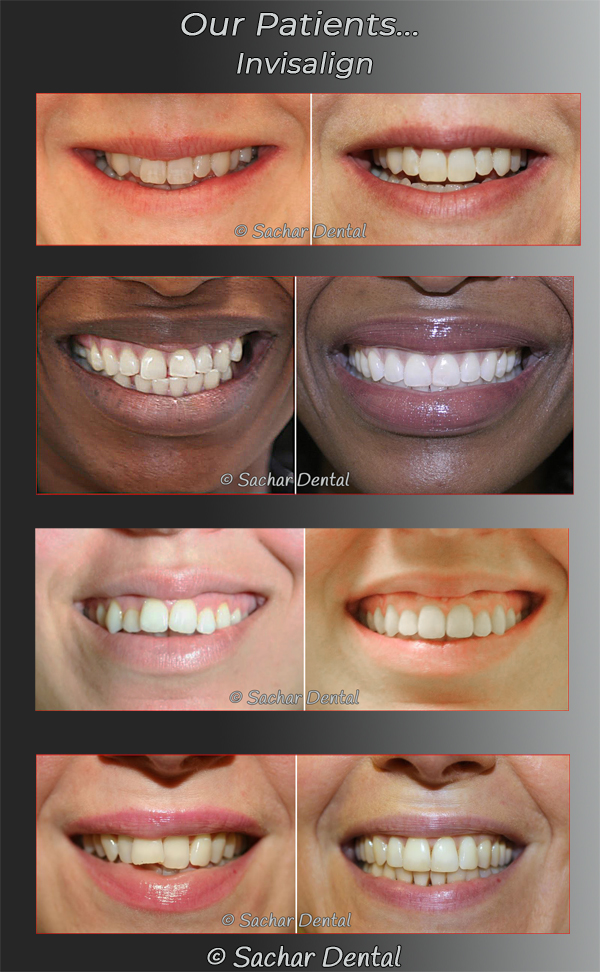The Cost of Invisalign: Recognizing the Investment in Your Smile
The Cost of Invisalign: Recognizing the Investment in Your Smile
Blog Article
Invisalign vs. Conventional Braces: Which Choice Is Right for You?
When considering orthodontic treatment, the selection between Invisalign and traditional braces offers several important aspects that warrant cautious analysis. Invisalign provides a discreet choice with removable aligners, while standard dental braces provide an extra visible yet efficient remedy for severe imbalance.
Summary of Therapy Choices

On the other hand, typical dental braces include metal braces and wires that are adhered to the teeth. This approach uses constant pressure in time to accomplish placement. While effective for complex orthodontic concerns, standard braces call for normal gos to for changes and can pose difficulties in keeping oral hygiene as a result of the difficulty of cleaning about cables and braces.
Both options have their benefits, and the selection typically rests on specific dental conditions, way of life preferences, and individual compliance. Inevitably, consulting an orthodontic professional is important for figuring out one of the most appropriate treatment strategy tailored to private needs. Recognizing the nuances of each alternative can significantly influence the general success of orthodontic treatment.
Visual Factors To Consider
A considerable element affecting the option in between Invisalign and conventional braces is the aesthetic charm each treatment supplies. Invisalign aligners are crafted from clear plastic, making them practically undetectable when used. This discreet appearance is particularly attracting teens and adults who might really feel uneasy about their orthodontic treatment. The capacity to maintain a natural smile throughout the alignment process can substantially boost the client's self-confidence in social and specialist setups.
On the other hand, traditional braces include metal braces and cables, which can be a lot more obvious. While developments in orthodontic technology have actually brought about the development of smaller brackets and tinted elastics, typical braces still keep an even more obvious account. For some individuals, the presence of dental braces may prevent them from looking for necessary treatment.
Inevitably, the selection between Invisalign and conventional dental braces may depend upon personal preferences regarding visual appeals. People that focus on discernment frequently lean toward Invisalign, while those that are less concerned about visibility might select traditional dental braces. Recognizing the visual implications of each alternative is vital for making an informed decision that lines up with one's way of living and preferences.
Convenience and Convenience

In terms of benefit, Invisalign aligners are detachable, allowing clients to enjoy their preferred foods without restriction and preserve optimum oral hygiene. Cleaning and flossing are simplified, as the aligners can be secured throughout these regimens, Recommended Reading whereas conventional braces call for cautious maneuvering around braces and wires.
In contrast, conventional dental braces require normal changes, making them less hassle-free for those with hectic routines. On the whole, the convenience and comfort of Invisalign make it an enticing choice for numerous individuals looking for orthodontic therapy.
Therapy Period and Effectiveness
While both Invisalign and typical dental braces work in fixing oral imbalances, the period of treatment can differ significantly in between both alternatives. Usually, Invisalign therapy can take anywhere from 12 to 18 months, depending on the intricacy of the situation. The clear aligners function by slowly moving teeth right into their preferred settings, and routine follow-ups with an orthodontist help make certain progress stays on track.
On the other hand, standard dental braces usually need a longer commitment, usually varying from 18 months to three years. This results from their set nature and using wires and brackets, which can be a lot more reliable for extreme misalignments and intricate situations (Invisalign). The treatment effectiveness of typical braces is well-documented, as they permit precise adjustments and better control over tooth activity
Eventually, the option between Invisalign and typical braces may pivot on both the anticipated therapy period and the particular oral issues handy. Consulting with an orthodontist is crucial, as they can offer customized referrals based upon private requirements, guaranteeing the selected approach lines up with desired outcomes and durations.
Price Contrast and Insurance Coverage Choices
Expense plays a here considerable role in the decision-making process for individuals thinking about orthodontic therapy, whether going with Invisalign or typical braces. Usually, the expense of Invisalign ranges from $3,000 to $8,000, while typical dental braces typically set you back in between $2,000 and $6,000. Factors influencing these prices consist of the complexity of the situation, the duration of therapy, and geographical place.
Numerous dental insurance plans give partial coverage for orthodontic therapies, but the specifics can vary extensively. Usually, standard dental braces might be a lot more often covered by insurance coverage strategies contrasted to Invisalign, which some insurers classify as a cosmetic treatment.
Additionally, numerous orthodontic practices offer flexible settlement plans, making both therapy alternatives a lot more available. Patients ought to ask about possible financing choices and price cuts for ahead of time repayments. Examining the total price, including insurance coverage advantages and settlement strategies, is vital for making a notified decision that lines up with both aesthetic preferences and spending plan considerations.

Verdict
In recap, the option in between Invisalign and typical dental braces hinges on numerous elements, including visual choices, comfort, therapy duration, and cost. Invisalign provides a very discreet, removable option that facilitates oral health and nutritional versatility, while standard braces might be preferable for complicated dental issues and commonly come with a lower rate factor. Inevitably, appointment with an orthodontist is vital to evaluate specific circumstances and establish the most ideal treatment alternative for accomplishing ideal dental placement.
When considering orthodontic treatment, the selection between Invisalign and traditional braces offers numerous essential elements that merit careful examination.Comparing Invisalign and standard dental braces exposes distinctive therapy choices for orthodontic adjustment.While both Invisalign and typical braces are efficient in fixing oral imbalances, the duration of therapy click reference can differ dramatically in between the 2 alternatives.Expense plays a significant duty in the decision-making procedure for people thinking about orthodontic treatment, whether deciding for Invisalign or standard dental braces.In summary, the choice between Invisalign and conventional braces pivots on multiple elements, consisting of aesthetic preferences, comfort, treatment period, and price.
Report this page